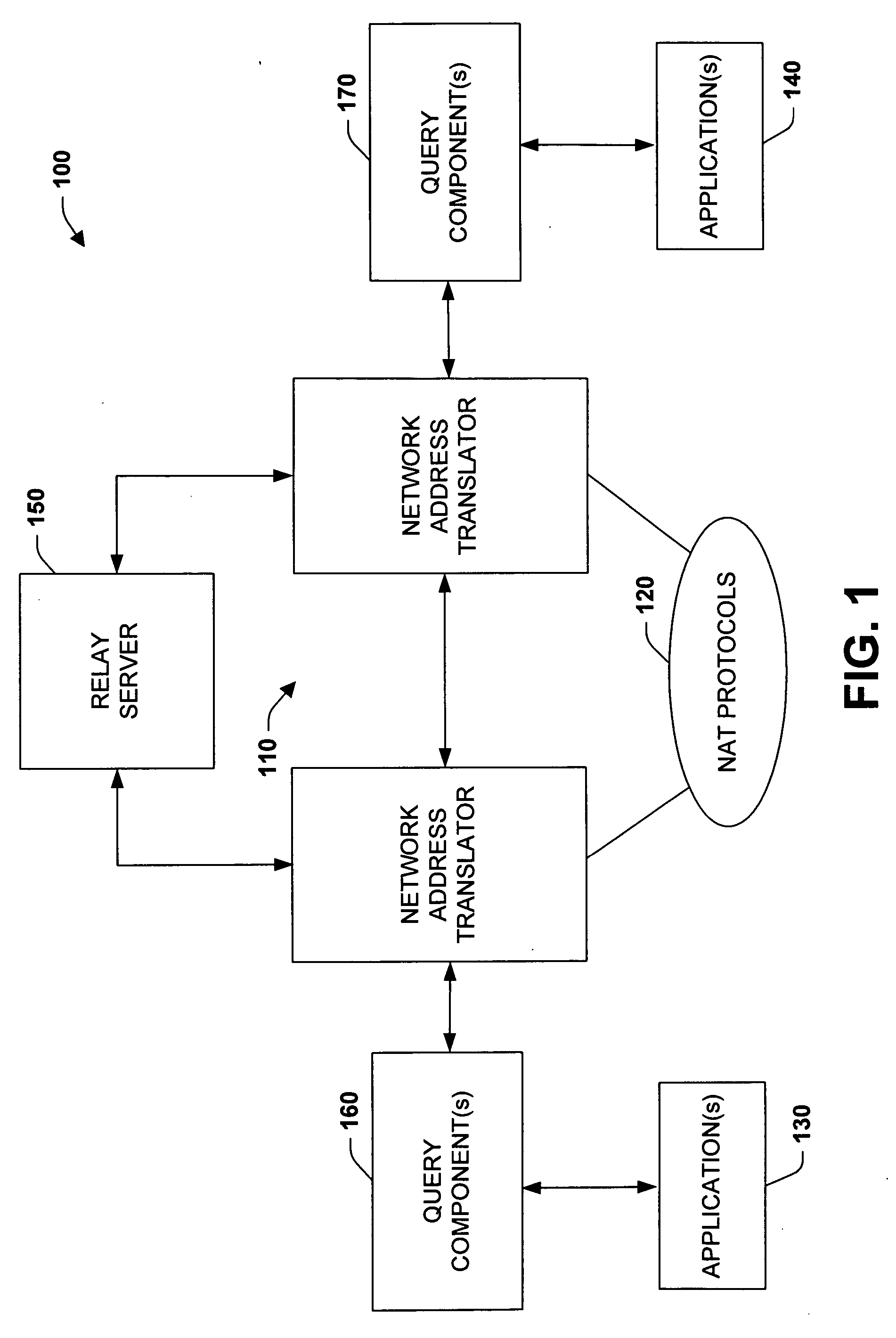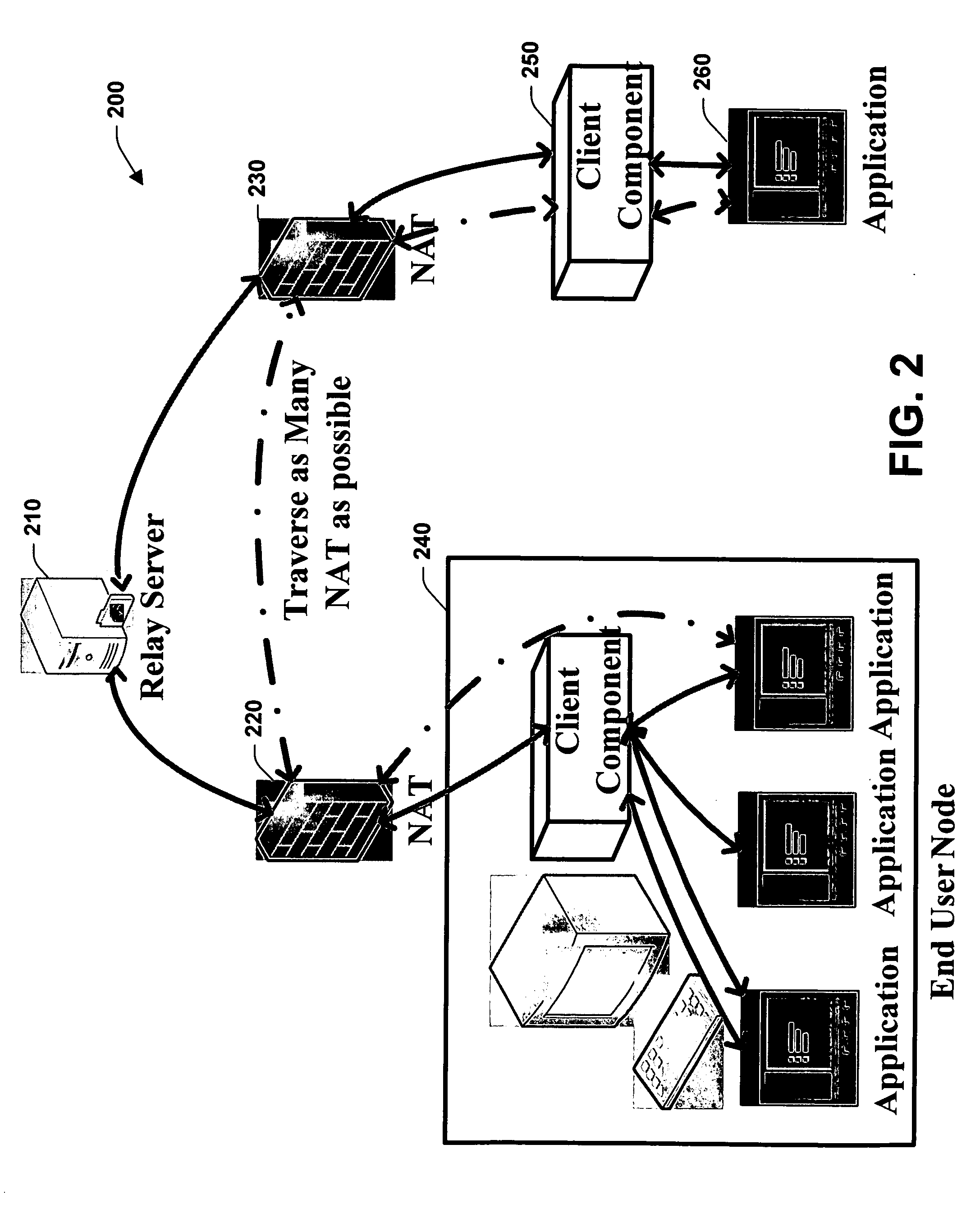Automated NAT traversal for peer-to-peer networks
a peer-to-peer network and automatic technology, applied in the field of computer systems, can solve the problems of putting an undue processing and network nat is a major obstacle to end-user applications, and most users do not have the sophistication or desire to properly configure these components, so as to facilitate communication, reduce the burden on relay servers, and mitigate the administrative burden of manually config
- Summary
- Abstract
- Description
- Claims
- Application Information
AI Technical Summary
Benefits of technology
Problems solved by technology
Method used
Image
Examples
Embodiment Construction
[0027] The subject invention relates to systems and methods that facilitate direct network communications between peers. This is achieved by classifying a plurality of network protocols and subsequently testing network responses in order to automatically determine which of the protocols may be suitable to establish the communications. Upon determination of the protocols, direct network connections can be established between peers while mitigating the need for devices such as relay servers to continue in the communications. In one aspect, a network communications system is provided. The system includes one or more Network Address Translators (NAT) to communicate data across a network between peers. A query component automatically tests a plurality of protocols in accordance with the NAT in order to determine a subset of the protocols that facilitate communications between the peers.
[0028] As used in this application, the terms “component,”“translator,”“system,”“object,” and the like...
PUM
 Login to View More
Login to View More Abstract
Description
Claims
Application Information
 Login to View More
Login to View More - R&D
- Intellectual Property
- Life Sciences
- Materials
- Tech Scout
- Unparalleled Data Quality
- Higher Quality Content
- 60% Fewer Hallucinations
Browse by: Latest US Patents, China's latest patents, Technical Efficacy Thesaurus, Application Domain, Technology Topic, Popular Technical Reports.
© 2025 PatSnap. All rights reserved.Legal|Privacy policy|Modern Slavery Act Transparency Statement|Sitemap|About US| Contact US: help@patsnap.com



